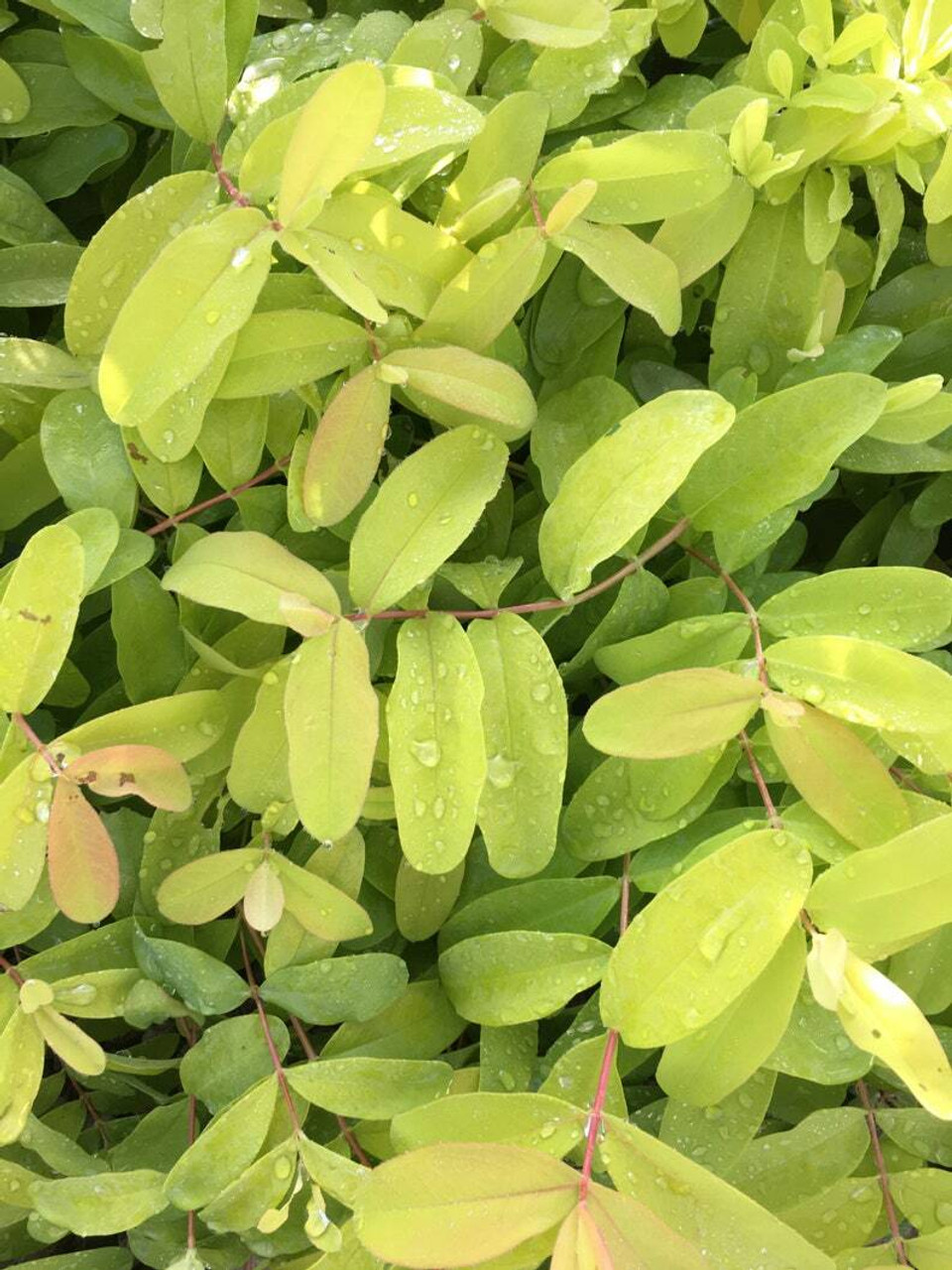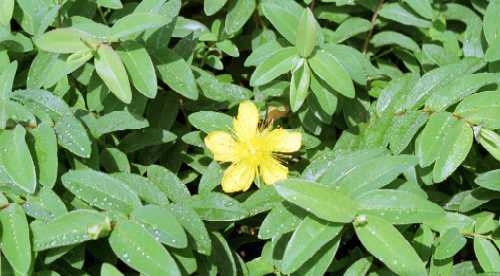Product Description
Hypericum calycinum 'Brigadoon' (10)ct Quarts
a/k/a Golden St. John's wort, Aaron's beard
Bright foliage color for shady sites.
Golden yellow, oval leaves, reddish orange edges with 2" gold flowers emerge in late spring and early summer.
Plants form a dense weed-proof, noninvasive, semi-evergreen groundcover.
Especially useful for stabilizing slopes and erosion.
Zones: 5/6 to 9/10
Full sun to part shade
Height 12-16 inches
Spread 12-23 inches.
Flower Color Yellow
Blooming Time Early Summer - Mid Fall
Foliage Color Chartreuse Yellow
Hypericum calycinum 'Brigadoon' is a delightful cultivar of the popular St. John's Wort, offering a vibrant twist on the classic groundcover. It is cherished for its bright, golden-yellow foliage that adds a splash of sunshine to any garden, even when not in bloom.
- Eye-catching golden foliage: Unlike the typical green leaves of Hypericum calycinum, 'Brigadoon' boasts stunning golden-yellow foliage that brightens up shady areas and adds a touch of warmth to any landscape. The leaves may even develop reddish tinges in cooler weather, adding further interest.
- Bright yellow flowers: In addition to the vibrant foliage, 'Brigadoon' also produces cheerful, star-shaped yellow flowers in summer. These blooms provide a beautiful contrast against the golden leaves and attract pollinators like bees and butterflies.
- Spreading habit: Like its parent species, 'Brigadoon' spreads by underground stems, forming a dense mat that effectively suppresses weeds and stabilizes slopes. This makes it an excellent choice for ground cover or erosion control.
- Low maintenance: Once established, it is a relatively easy-care plant that requires minimal attention. It is drought-tolerant and deer-resistant, making it a great option for busy gardeners or those with challenging growing conditions.
- Versatile use: 'Brigadoon' can be used in various garden settings, including borders, rock gardens, woodland gardens, and even as a ground cover under trees. It is a great way to add a touch of color and texture to any landscape.
Growing Tips:
- Planting: Plant 'Brigadoon' in spring or fall in well-drained soil and full sun to partial shade. The golden foliage will be most vibrant in full sun. Space plants about 18 inches apart to allow for spreading.
- Watering: Water regularly during the first year to help the roots establish. Once established, it is drought-tolerant but appreciates occasional watering during prolonged dry spells.
- Fertilizing: Apply a balanced fertilizer in early spring before new growth begins.
- Pruning: Trim lightly in late winter or early spring to maintain a compact shape and encourage further blooms.
- Pest and disease resistance: 'Brigadoon' is generally pest and disease-resistant, but watch for rust or wilt, especially in humid climates.
Overall, Hypericum calycinum 'Brigadoon' is a delightful and easy-to-grow plant that adds a touch of sunshine to any garden. Its vibrant golden foliage, cheerful yellow flowers, and low-maintenance nature make it a great choice for gardeners of all levels.
Border, Deer Resistant, Drought Tolerant, Rabbit Resistant, Ground Cover, Massed
Ten (10) plants in quart containers per flat (or tray).
Other Details
The most important part of the plant is its root system. Healthy roots are the foundation of a healthy, vibrant plant. The type of plug container used is based on the specific needs of the plants. Perennials offered as bare root traditionally perform better when planted as bare root.Planted in a specialized mix, potted plants have well established root systems. Top growth stage will vary depending on the current life cycle and time of year when shipped. In Winter and early Spring dormant plants may be shipped. Dormant plants may be planted right away, even before the last frost date.
Most bare root varieties are field grown for at least one season, though Hemerocallis and Hosta are grown for two seasons. The bulk of the soil is removed during the harvesting process and the tops of most varieties are trimmed back to the crown. They are graded, packed in shredded aspen or sphagnum moss and stored in freezers until ready to be shipped.
See our Container Sizes and Bare Root Perennials pages for more information.
Plant information and care is provided in the Overview section, Plant Genus Page and general information is provided in the Planting Care & Guides. Additional questions can be asked on each Plant page.
Plant Spacing: Using the maximum mature spread or width of a plant to guide spacing, ensures space to grow to full size. To fill an area sooner, plant them closer together. Just remember, future thinning or transplanting may be needed.
Water: Keep a close eye on newly planted perennials, especially throughout the first growing year. Most early plant loss is due to too much or too little water!





